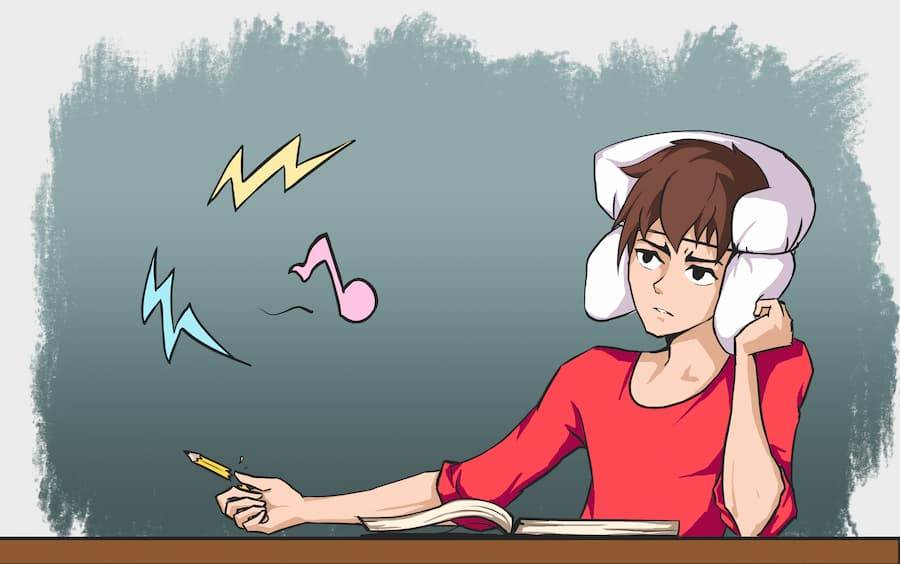These days, everyone seems to be searching for a little peace and calm. But even a reasonable idea like that might go too far. The quietest room on earth, an
anechoic chamber at Salford and
Orfield Laboratories in Minnesota, is so quiet that the longest anyone has been able to withstand it is 45 minutes. It’s quiet inside the room. It is so quiet that the recorded sound noise is currently negative
decibels. In this article, we will explore the wonders of anechoic chambers (more info about anechoic chambers on
sciencedirect.com).

What Is an Anechoic Chamber?
The Salford anechoic chamber (
official website) has been built to be as silent as possible, with a very low background noise level of -12.4dBA . This is way below what most people will ever need to
calculate for a
sound intensity meter. If you need to reliably measure very silent
noise sources or test devices that themselves produce very little noise, this low level is vital.
These purpose-designed spaces are separated from
outside noise so that nothing can spill in and they also float on special mounts to avoid going into any unnecessary noise or vibration.
You can typically find inside the chamber itself that all the
walls,
ceiling, and
floor are protected with long triangular foam wedges intended to withstand any noise that reaches them, preventing the sound coming back to you from bouncing. In general, there is a wire mesh ground so that you can step in for measurements and use the chamber.
The consequence of this is that you only actually hear the noise you make yourself. In fact, what this indicates is that you can hear the blood rushing through your brain, the crackling of your joints, and the sound of your digestive system very frequently.
360 video of Anechoic Chamber, Salford University
What Is It Made Of?
In the Radio Frequency (RF) setting, by coating them with RF
absorbing fabrics, the reflective walls of the shielded space are rendered ‘invisible’ or ‘anechoic’. A carbon loading foam pyramid is the most common insulator. Sharp tips on the absorbers prevent RF waves from jumping off, causing the waves to transition slowly within the foam from air to the uncompressed carbon.
This progressive tip-to-core taper is the secret of RF absorbers. The amount of RF bouncing off the anechoic chamber walls is always 0.1 percent to 1 percent of the initial wave (-30 to -20 dB). The chamber’s low degree of reflection helps to precisely calculate the gain, performance, and radiation patterns of the antennas inside the room.
Materials Used in Constructing an Anechoic Chamber
What Are Anechoic Chambers Used For?
An RF Anechoic Chamber (an-echoic “non-reflective, non-echoing, echo-free” meaning) is an insulated space built to have no unnecessary electromagnetic waves in an area. It is used to evaluate, in the exclusion of any noise or interference, RF components such as antennas and radars.
In acoustics, they are usually used to carry out testing. Both sound energy, with absolutely none reflecting back, will move away from a noise source. Typical studies in the Anechoic Chamber involve testing a loudspeaker’s transfer mechanism or the directivity of sound radiation from industrial
machinery. Regularly used in automobile, building, and military
vehicle production.
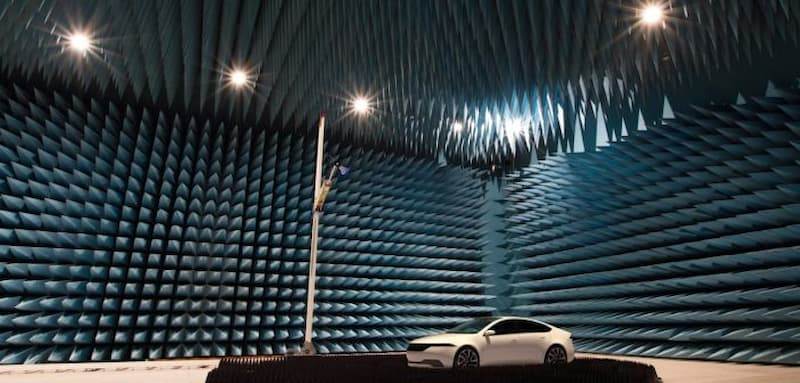
Radio-Frequency (RF) Shielding
The practice of minimizing the electromagnetic field in a room by covering the field with barriers consisting of permeable or magnetic materials is electromagnetic shielding. Usually, shielding is added to enclosures to separate electrical components from their environment and to wires to isolate wires from the surroundings in which the cable travels, RF shielding is often referred to as electromagnetic shielding that absorbs radiofrequency electromagnetic radiation.
The coupling of radio waves, electric fields, and electrostatic fields can be minimized by shielding. The Faraday cage is also regarded as a conductive enclosure that is used to suppress electrostatic fields. The amount of reduction depends on the product used, its width, the size of the volume shielded and the strength of the fields of interest, and the size, shape, and
direction of the electromagnetic field apertures in a shield to an event.
Faraday Cage
Anechoic chambers are normally built by the installation of a Faraday cage, i.e. a metallic or strongly conductive coating will cover the whole chamber (read more about Faraday cage on
www.sciencefacts.net). This prevents the intrusion of external waves into the chamber and creates interference that can lead to mistakes when checking a device.
A Faraday cage works on the idea that an external electrical force allows the electrical charges to be dispersed inside the conducting material of the cage so that they null the influence of the field in the
interior of the cage. This is the same theory that, when lightning hits the building, passengers seated inside a car are not harmed. From outside the chamber, this treats signal interference.
Video: How do Signal Blockers Work? (Faraday Cages)
Radiation Absorbent Material
The inside of the anechoic chamber is coated with radiation absorbent material (RAM) to remove echoes of the signal emitted by the DUT (more info about RAM on
sciencedirect.com). RAM attempts to capture the incident RF signal from either source as quickly as possible. Reduced internal reflections would result in a highly powerful RAM, which is the optimal result. RAM used in anechoic chambers is typically pyramid (or cone) shaped since sharp tips avoid RF waves from bouncing off and allow gradual absorption of the wave.
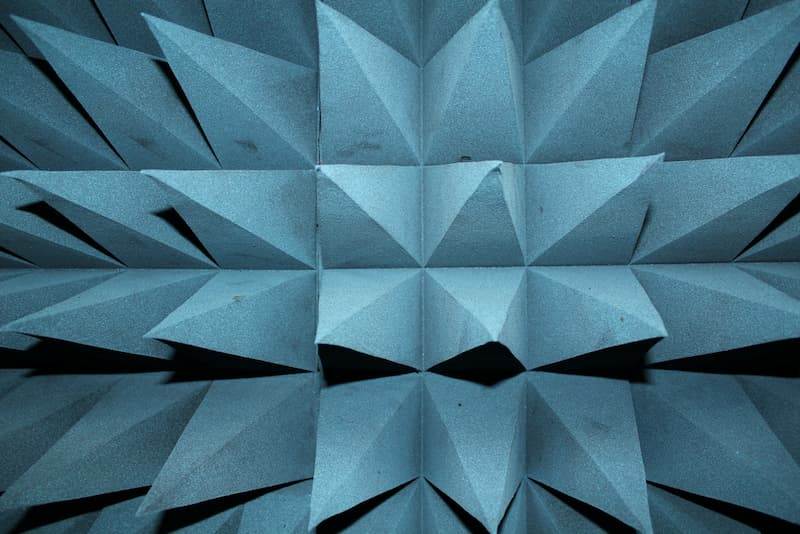
Pyramid RAM
When the incident wave is a natural incidence to the inner chamber surface and the pyramid height is roughly equal to λ / 4, while λ is the wavelength of free space, pyramidal RAM is at the most absorptive. Increasing the height of the pyramid normally increases RAM performance at lower frequencies, but also contributes to higher costs.
The number of radio waves that rebound off the original wave is mostly 0.1% to 1% (-30 to -20 dB) of the original wave. This stops the reflected waves from creating interference in the DUT transceiver and it is possible to calculate accurately different RF parameters such as gain, performance, and radiation patterns.
Types of Anechoic Chamber
There are several distinct types of anechoic chambers, the first containing acoustic chambers, in which the walls are treated to block reflections with
fiberglass sound absorbers, and the second including shielded spaces, where radio frequency absorbers are treated the inner surfaces.
Radio-frequency (RF) RF Shielded Rooms
Anechoic radiofrequency chambers can vary in size from a small box to normal space to as wide space like an aircraft hanger. An RF shielded room’s interior design is similar to that of an audible anechoic chamber, but instead of acoustically absorbent material, the inner surfaces of the RF chamber are filled with a radiation absorbent material.
The pyramid-shaped structures must be scaled according to the wavelength in an RF shielded chamber, so you would require pyramids many feet long if you want to do low-frequency (100 MHz) measurements. The height required for a chamber can be up to 30 feet or more in certain circumstances.
Application
Measuring the emissions of material to decide if it meets the limits specified in relevant industry guidelines is one of the primary applications for an RF chamber. Radiated emission testing, radiated tolerance testing, wireless transmitter testing, antenna testing, and precise absorption rate testing are additional applications for RF anechoic chambers.
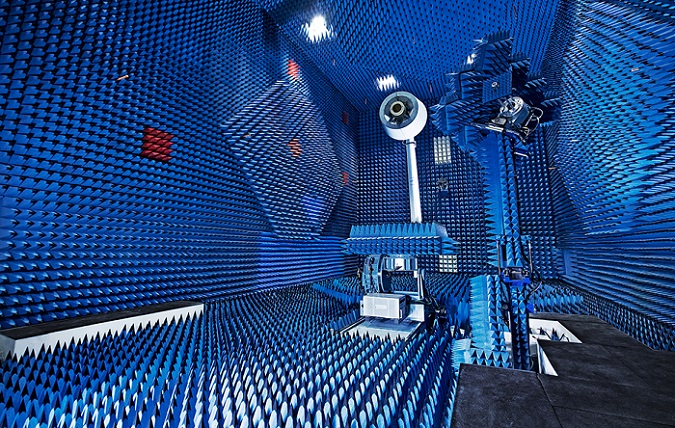
Electromagnetic Shielded Rooms
In order to remove electromagnetic emissions or radiation from the structure, these rooms are meant for containing servers and other electronics. Usually, electromagnetically shielded rooms are designed with steel panels that are welded together.
Application
● Academic Institution
● Aviation & Aerospace
● Automotive Field
● Industrial Retail
● Government & Protection
● Electronics Science (Consumer, Industrial, Power)
● Medical Science
● Research & Development
● Telecommunication
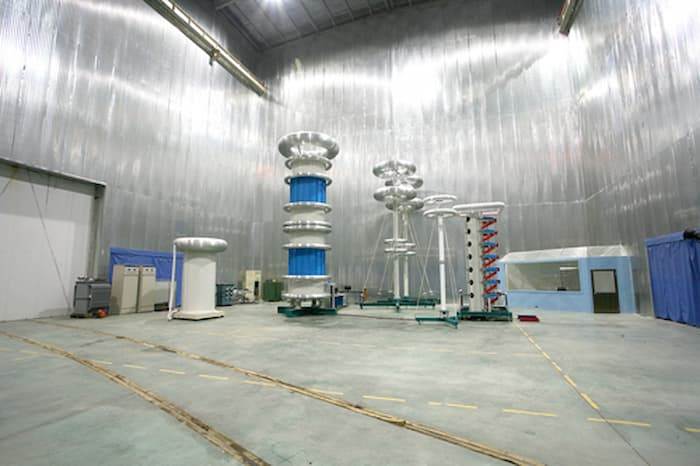
The World’s Most Famous Anechoic Chambers
Several institutions and companies around the world have built famous acoustic anechoic chambers, often for research and testing purposes. Here are some of the most well-known examples:
- Orfield Laboratories’ Anechoic Chamber (Minneapolis, USA): Orfield Laboratories‘ chamber in Minneapolis held the Guinness World Record for the world’s quietest place for a time. It is known for its incredibly low noise levels, with a decibel rating of -9.4 dBA. It is often used for testing audio equipment and conducting sensory deprivation experiments.
- Harman International’s Anechoic Chamber (Northridge, USA): Harman International, a subsidiary of Samsung Electronics, has a renowned anechoic chamber for testing audio and electronic equipment. It’s one of the largest in North America and is used for research and development in the audio industry.
- Technical University of Denmark’s Anechoic Chamber (Kongens Lyngby, Denmark): The Technical University of Denmark (DTU) houses one of Europe’s largest anechoic chambers. It’s primarily used for acoustic research, including testing loudspeakers, microphones, and other audio equipment.
- National Physical Laboratory’s Acoustic Test Facility (Teddington, UK): The National Physical Laboratory (NPL) in the United Kingdom has an acoustic test facility equipped with an anechoic chamber. It’s used for various acoustic research projects and for calibrating microphones and other audio equipment.
- NASA Glenn Research Center’s Reverberant Acoustic Test Facility (Cleveland, USA): NASA’s Glenn Research Center has a large reverberant acoustic test facility. While it’s not a traditional anechoic chamber, it’s designed for simulating the extreme acoustic environments that spacecraft experience during launch.
- University of Salford’s Acoustic Anechoic Chamber (Salford, UK): The University of Salford is known for its acoustic research, and its anechoic chamber is a valuable resource for studying sound and vibration. It’s used for various research projects, including architectural acoustics and audio engineering.
- University of Texas at Austin’s Anechoic Chamber (Austin, USA): The University of Texas at Austin has a large anechoic chamber used for a wide range of acoustic research, including testing audio equipment, studying architectural acoustics, and conducting psychoacoustic experiments.
These chambers are critical for advancing research and development in fields like acoustics, audio engineering, aerospace, and more. They provide controlled environments for conducting precise experiments and tests, ultimately contributing to the development of better products and technologies.
Most Popular Anechoic Chamber in the US
Oliver Eckel, the founder of the group, helped pave the groundwork for anechoic research by helping to build the chamber of the Cruft Laboratory at Harvard University in 1945. The first anechoic chamber ever to be designed was commissioned by the National Science Security Committee as part of a top-secret research effort. Since then, Eckel Noise Control Technologies (
official website) has proven to be a leader in the area of acoustic science, constructing facilities for a wide variety of industrial, telecommunications, consumer goods, aircraft/aerospace, audio, and academic customers worldwide.
Eckel Noise Control Technologies (Cambridge, Massachusetts)
The Complete and Hemi-Anechoic Chambers of Eckel are custom-engineered systems built to create the perfect acoustic atmosphere in which a variety of industries and disciplines can perform testing and analysis. These state-of-the-art echo-free enclosures have a 99+ percent degree of sound energy absorption and are precision-designed and custom-made, to meet the frequency criteria needed to attain exacting targets for scientific and product testing.
By assisting in the construction of the first chamber ever created, Eckel helped pave the foundations for anechoic testing and has continued to be a leader in the field of acoustic science in the more than 65 years since then, having built facilities worldwide for a wide variety of clients among the automobile, telecommunications, aircraft/aerospace, audio, high-tech and research cultures of consumer goods.
Anechoic Chamber Design by Eckel Noise Control Technologies Video Review







